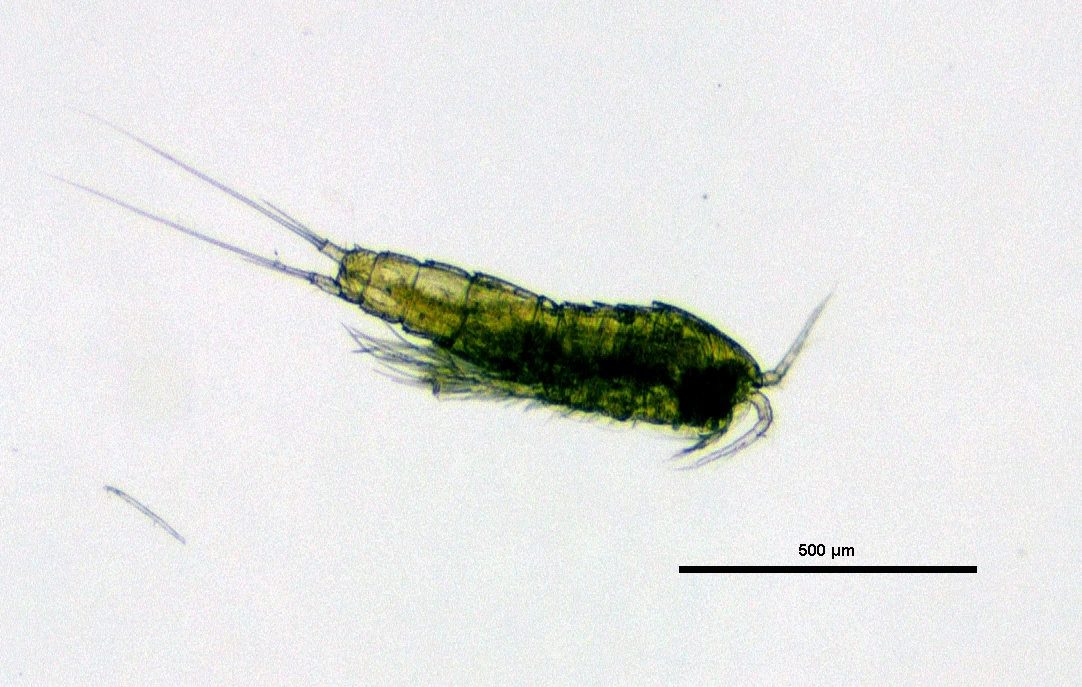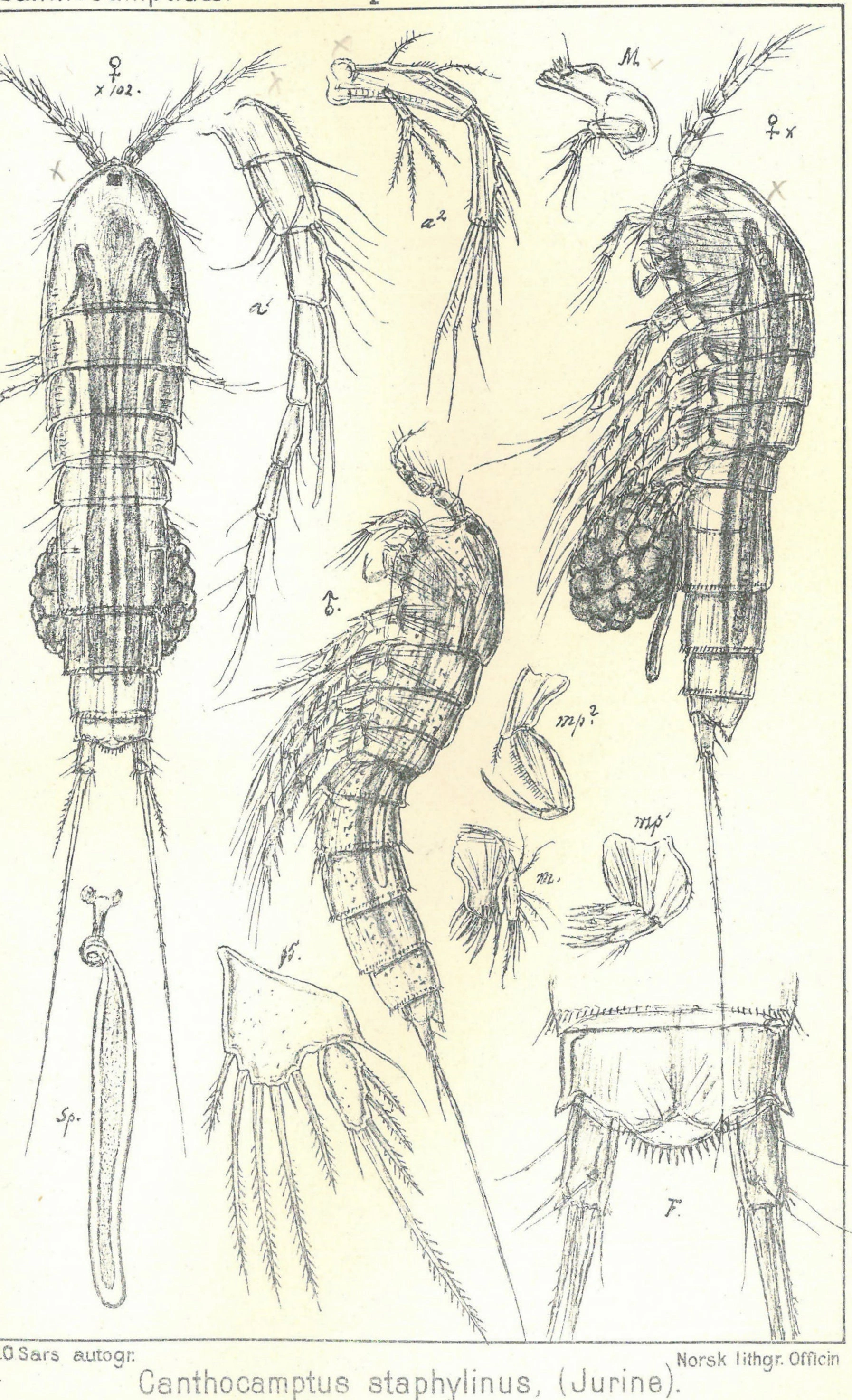Canthocamptus microstaphylinus
Canthocamptus microstaphylinus is very similar to C. staphylinus, but is smaller and even more slender. It is questioned whether this is a separate species.
Key characteristics
Canthocamptus microstaphylinus has a body which is slightly narrowed in the middle. Both exopod and endopod in the first leg are 3-segmented, the endopod being very slender. The operculum is large, and according to the literature bearing generally 7–9 spines. Specimens found in Norway have 10 spines. The caudal ramus is rectangular and about twice as long as wide. Both the inner and the outer terminal setae in adult individuals have a break or joint (also known as “helle Stelle”). The antenule consists of eight segments. The male has a pear-shaped spermatophore.
Female: Length 0.69–0.72 mm
Male: Length 0.63–0.74 mm
Ecology and distribution
Canthocamptus microstaphylinus is recently found in two localities; a pond in Eastern Norway and a stream in Northern Norway, at 142 and 357 m a.s.l., respectively. It is an oligohaline, cold-stenothermic species that is a good swimmer. It has a palearctic distribution and can be found in different types of waterbodies, both at sea level but also in mountain regions. Canthocamptus microstaphylinus is also known from moist soils.

